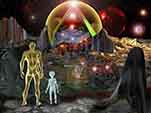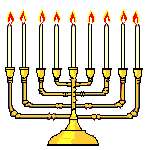Hi Ken..
TY so much for this. Just FYI, I do not adhere to a great deal of Sitchins research. He has a lot going for him (outstanding research) but some of his most fundamental 'finds' are based on supposition and wishful thinking, instead of sound research among universally excepted translations. Truthfully, I think he played his part. Willingly?? Knowingly?? Time will tell.
*********************************************************
Re: CGI's Morgan: ♫The Annunaki's Connec....
Hi, Susoni and Morgan
For a radically different interpretation of the Nibiru/Anunnaki story, see
http://www.truthbeknown.com/anunnaki.htm
Regards,
Ken
********************
Snip
Enlil/Ellil/Bel
The "king of the Anunnaki," Enlil is the storm/wind god, also essentially the same as the later Bel or Baal, the Canaanite sun god/solar hero. Enlil and Ninlil give birth to the moon god Nanna, "a major astral deity of the Sumerians," who was called "Sin" in Babylonian. Sin is the same moon god encamped at Mt. Sinai, as well as worshipped at Ur and Harran, where purportedly lived the mythical Abraham, progenitor of the Hebrews, who "borrowed" many of their gods (Elohim) from Mesopotamia (and Canaan, Egypt, etc.). Obviously, neither the moon nor "his parents" are real persons/aliens; nor are the rest. Regarding Enlil/Bel, the Encyclopedia Britannica says:
"Bel
"(Akkadian), Sumerian Enlil, Mesopotamian god of the atmosphere and a member of the triad of gods completed by Anu (Sumerian An) and Ea (Enki). Enlil meant 'Lord Wind'- both the hurricane and the gentle winds of spring were thought of as the breath issuing from his mouth, and eventually as his word or command [cf. Christian "logos" (John 1:1)]. He was sometimes called Lord of the Air.
"Although An was the highest god in the Sumerian pantheon, Enlil had a more important role: he embodied energy and force but not authority. Enlil's cult centre was Nippur. Enlil was also the god of agriculture: the Myth of the Creation of the Hoe describes how he separated heaven and earth to make room for seeds to grow. He then invented the hoe and broke the hard crust of earth; men sprang forth from the hole. Another myth relates Enlil's rape of his consort Ninlil (Akkadian Belit), a grain goddess, and his subsequent banishment to the underworld. This myth reflects the agricultural cycle of fertilization, ripening and winter inactivity.
"The name of his Akkadian counterpart, Bel, is derived from the Semitic word baal, or "lord." Bel had all the attributes of Enlil, and his status and cult were much the same. Bel, however, gradually came to be thought of as the god of order and destiny. In Greek writings references to Bel indicate this Babylonian deity and not the Syrian god of Palmyra of the same name."
Enlil (left) attended by the Iggigi; painting from Mari, Sumer
Although there were many Baalim, the singular Baal apparently came to represent the sun in the age of Taurus (c. 4500-2400 BCE), whence, it is said, comes the word "bull."
Sin and Shamash
The moon god Sin is the father of Shamash, the Babylonian sun god, who was worshipped by the Israelites. Indeed, "sun" in Hebrew is "shamash." The sun god Shamash was called the "sublime judge of the Anunnaki."
Enki/Ea
The "commander of the Anunnaki" and son of Enki/Ea, the god of "the waters" (cf. Gen. 1:1), was Marduk, or Merodach, who is apparently the Mordecai of the biblical book of Esther (Ishtar). Also called a "king of the Igigi," Marduk was the supreme Babylonian god and often represented Jupiter, although as "Bel-Marduk" he incorporated aspects of the sun god as well and was considered as such at a late period in his worship.
One of Marduk's 50 names was "Nibiru" or "Nebiru," in which Robert Temple in The Sirius Mystery sees the Egyptian term "Neb-Heru," meaning "Lord of the sun." The god Horus or "Heru" is indeed largely a sun god, depicted as a hawk with wings outstretched and the solar orb on his head.
Rather than representing the "12th planet," the description of Nibiru in the Enuma Elish does indeed seem to depict the personification of the Winged disc representing the sun and sun and its "exploits." "Nebo" was the Babylonian version of "Moses," actually a solar hero, and Nibiru, in fact, is represented by a winged disc, a common motif depicting the sun. According to the consensus of astronomers worldwide, both amateur and professional, there is no evidence for the 12th planet/Nibiru as Sitchin presents it. (In other words, "Planet X" is not a known, astronomical reality.)
Gilgamesh
Gilgamesh wrestling the Bull of Heaven; cylinder sealThe demigod/hero Gilgamesh is depicted as wrestling the "celestial bull," said to represent the sign of the age of Taurus and is similar to the motif of the Perso-Roman sun god Mithra slaying the bull. In mourning the death of Enki, Gilgamesh "goes to the mountains of Mashu and passes by the guardian scorpion-demons into the darkness." Mt. Mashu was where "every evening the sun sought repose." Per Robert Temple, "Mashu" may be derived from an Egyptian term meaning, "Behold, the sun." Like "Moses," derived from mashah in Hebrew (Strong's h3871), "Mashu" is apparently related to "Shamash" and represents the sun. The "scorpion-demons" or scorpion-men are evidently the stars in the constellation of Scorpio, in the darkness of the night sky. Gilgamesh has also been associated with the Egyptian sun god Osiris, as has the biblical "Nimrod" or "Nemrod." The Catholic Encyclopedia (CE) states:
"Gilgamesh, whom mythology transformed into a Babylonian Hercules [the Greek solar hero], whose fortunes are described in the Gilgamesh-epos, would then be the person designated by the Biblical Nemrod. Others again see in Nemrod an intentional corruption of Amarudu, the Akkadian for Marduk, whom the Babylonians worshiped as the great God..." ("Babylonia")






































